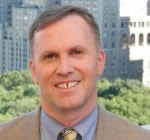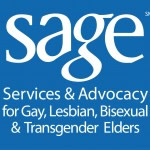
|
As HIV Turns 30, Attention Turns
to an Aging Epidemic
By Michael Adams , Executive Director, Services & Advocacy
for GLBT Elders ( SAGE )
  June 30, 2011 - Just two months before the 30th anniversary of the first reported cases of HIV in the United
States, the Leadership Council of Aging Organizations (LCAO)-a network of national
aging organizations-released its official recommendations for the upcoming reauthorization of the Older Americans Act,
the country's primary vehicle for delivering services to older people at the local level. June 30, 2011 - Just two months before the 30th anniversary of the first reported cases of HIV in the United
States, the Leadership Council of Aging Organizations (LCAO)-a network of national
aging organizations-released its official recommendations for the upcoming reauthorization of the Older Americans Act,
the country's primary vehicle for delivering services to older people at the local level.
Addressing Needs of Older Americans Living with HIV
At the urging of SAGE, in partnership with several diverse aging and HIV organizations, the LCAO is promoting seven recommendations
to include lesbian, gay, bisexual and transgender (LGBT) elders in the provisions of the Older Americans Act, and a critically important
recommendation to help address the needs of older people living with HIV. LCAO is encouraging the federal government to address
the service needs of "the growing number of older adults living with HIV and the related health disparities, discrimination and stigma."
Why are these recommendations happening now? Our country is witnessing two major demographic shifts. First, as a large wave
of Baby Boomers begins entering retirement age, we're concurrently seeing larger and larger numbers of "out" LGBT older people. Second,
thanks to the medical advances in HIV-related treatment, many people who have HIV/AIDS are living longer lives-and, thus, the "graying"
of HIV in this country.
Today, approximately 28% of people living with HIV in the U.S. are over 50. By 2017 that number is projected to grow to 50%.
In addition, it is estimated that 15% of all new HIV infections occur in people over 50. And the available data clearly documents that the
AIDS epidemic has disproportionately affected men who have sex with men, gay and bisexual men, people of color and transgender people-of
all ages, including elders. More than 1,000 diagnoses of HIV infection were reported among MSM age 55 and older each year from 2006-2009,
according to CDC data (PDF 260KB).
Trends Creating Greater Health Risks for Older Adults
As a direct service provider with a long history of supporting LGBT older people living with HIV/AIDS, SAGE is deeply concerned about the severe challenges
that face our elders. For example, in one study, 80% of LGBT older people with HIV lived alone, compared to 67% of older heterosexuals living with HIV[1]. We
know from our experience working with LGBT older people living with HIV that the harmful effects of such social isolation include depression, poor nutrition
and premature mortality. In addition, fear of discrimination often prevents LGBT elders from seeking the health care they need until it is too late, which
means they can first present with advanced HIV infection (i.e., AIDS) leading to worse health outcomes. And, too often, HIV prevention messages ignore
LGBT older people or assume that older people are not sexually active. Together, these trends create greater health risks for older adults.
Earlier this month, the U.S. Department of Health and Human Services' Administration on Aging addressed some of these issues
in their special webinar, Positive Aging: HIV Turns 30. The webinar, featuring Kathy Greenlee, Assistant Secretary for Aging at HHS, and
SAGE's Doreen Bermudez, among others, focused on educating the Aging Network about HIV prevention and treatment specific to older
adults. If you were not able to participate live, please consider viewing the archive, available
at AoA's Older Adults and HIV/AIDS
webpage . The National Institute on Aging at NIH also has an Age Page on HIV, AIDS and Older People .
As we reflect on the past 30 years of the AIDS epidemic and its impact on the LGBT community, SAGE is focused on working
with partners across the aging and HIV fields, and government, to address the needs of older people living with HIV, many of whom are
LGBT. Solutions to these issues include improved research and data collection on older people living with HIV; prevention messages
that target elders of all sexual orientations and gender identities; more programs that acknowledge and address the fact that
LGBT older people and/or older adults living with HIV often have inadequate support from their communities or families of
origin; and training, such as that offered by SAGE's National Resource Center on LGBT Aging , for
aging services and healthcare providers about the unique needs of elders living with HIV/AIDS.
These are only the first steps to improving the quality of life for older people living with HIV. But they're critically
important ones.
###
Source: Blog.AIDS.gov
|